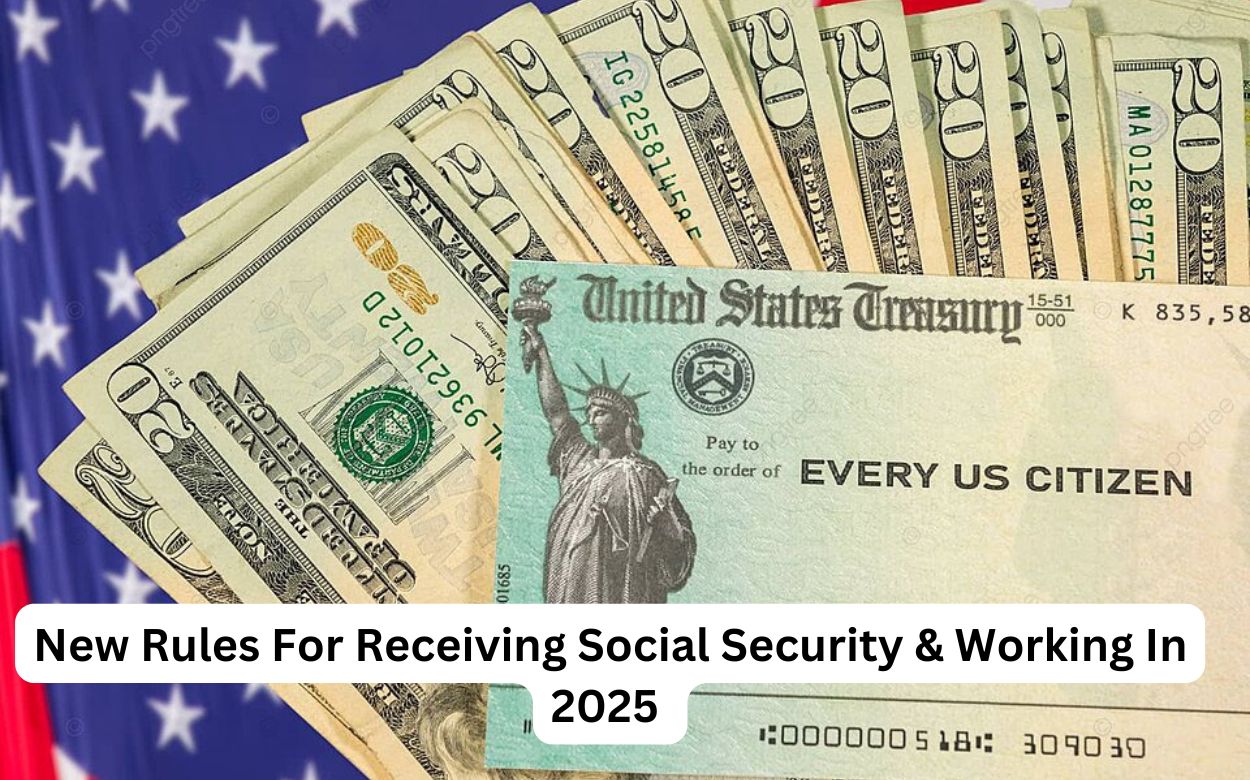New Social Security Rules for 2025 Revealed – Don’t Miss These Key Changes
Learning the New Rules for Receiving Social Security and Working in 2025 is critical. Many Americans rely on the Social Security Administration for financial help, particularly those who are poor, elderly, blind, crippled, or fall into other disadvantaged groups. Beneficiaries must be informed of the implications of these changes, which are expected to take effect in 2024. Beneficiaries who meet the Social Security Eligibility 2024 standards can receive these benefits. Given the number of assets and awards, it is evident that only a small percentage of maintenance is paid on a single day each month, and many people are misinformed about Social Security payments and believe they are necessary. By 2024, 68 million people will be receiving regular SSA payments.

New Rules for Receiving Social Security and Working in 2025:
Because of the enhanced financial stability that Old Age, Survivors, and Disability Insurance benefits provide, retirees with insufficient income to fulfill their basic costs usually rely on them. In 2023, disabled workers and their families submitted 8.5 million benefit applications. As a result, it is critical to grasp the new rules for receiving social security and working in 2025. Social Security is susceptible to regular modifications, affecting all Americans, whether employed or retired. This tendency will continue in 2024, with enhancements anticipated for the following year.
Who will be eligible for social security benefits while working in 2025?
To qualify for Social Security Eligibility 2025, you must meet the following conditions:
- Possess citizenship or reside there permanently.
- Meet the minimum income requirements of $112,500 for single applicants, $150,000 for married applicants filing jointly, and $112,500 for families.
- 65 years or older.
- I have dependents who are currently enrolled in Social Security.
What Are the Latest Rules for Receiving Social Security and Working in 2025?
Annual modifications to Social Security and its distributions are always keenly anticipated, as approximately 72.5 million people rely on one of its benefit programs. This year’s COLA is smaller than the 3.2% increase from the previous year.
- COLA Adjustments: The Social Security Administration expects a 2.5% increase in benefit payments in 2025, resulting in an average monthly increase of $50 for retired workers beginning in January. The average benefit will climb from $1,927 to $1,976, with couples’ total payments rising from $3,014 to $3,089.
- Maximum Taxable Earnings Increase: In 2024, $168,600 was the highest amount of money that might be subject to Social Security taxes. This will rise to $176,100 by 2025, implying that a more significant proportion of income will be taxed at the 6.2% rate as average incomes rise.
- Increase in Maximum Social Security Benefits: In 2025, the maximum payout for persons reaching full retirement age will be $4,018 rather than $3,822, as it was in 2024. This applies to those born after 1960 who attain the full retirement age 67. Early retirees’ benefits are cut, but those who delay retirement may see a rise.
- Employees’ earnings up to $168,600 in 2024 were subject to a 6.2% Social Security tax, which their employers matched. The maximum taxable earnings will increase to $176,100 in 2025 while the tax rate remains fixed.
- Increase in Disability Benefits: In 2024, Social Security Disability Insurance claimants will receive a 2.5% payment increase, averaging $1,542 per month, which is expected to rise to $1,580 by 2025. Disabled workers with a spouse and children can expect an average of $2,826 per month in 2025, while blind workers will receive a maximum of $2,700.
- Greater Credit Earning Requirement: To be eligible for Social Security benefits, an individual must earn 40 credits, up to four per year. By 2025, the earnings required for one credit will rise to $1,810.
Maximum Social Security Payment 2024:
- According to predictions, the maximum SSA payout for an employee retiring at 65 in 2025 will be $4,018 monthly.
- While uncommon, certain people may qualify for three types of Social Security benefits: SSI, SSDI, and VA.
- Individuals can use the Social Security Administration’s Retirement Age Calculator to determine their retirement age.


Comments are closed, but trackbacks and pingbacks are open.